When news broke of a blockbuster trade sending Eugenio Suárez and Jesse Winker to the Seattle Mariners, much of the focus was on the latter player. It’s not surprising that Suárez generated less enthusiasm than his All-Star teammate. After a prodigious 2019, Suárez spent two seasons mired in mediocrity, mainly due to high strikeout rates and a batting average hovering around the Mendoza line. Within his subpar 2021, however, was an otherworldly stretch of hitting at the end of the season. Suárez showed changes in his approach in September that, if carried over to 2022, could lead to a bounce-back campaign for Seattle’s new slugger.
Meteoric Rise, Dramatic Fall
Suárez took his power to new heights in 2019. He socked 49 homers, well above his previous career-high of 34, and raised his OPS 38 points to .930. His impressive output was fueled by a new approach at the plate. A tempting way for a power hitter to make the most of his skill set—especially in a bandbox like Great American Ball Park—is to sacrifice contact for power and pull the ball in the air. Suárez began doing just that in 2019:
Trading contact for power often comes with an uptick in strikeouts, as was the case for Suárez in 2019. Such a change is forgivable if the overall results are there — which for Suárez, they clearly were — and a hitter’s ceiling with this approach can be sky-high.
That said, a hitter’s floor with this approach is sometimes the basement. The expected metrics underlying Suárez’s career year hinted that this level of success wouldn’t continue:
Suárez’s 2020 showed what happens when the approach of selling out for power goes south. Despite popping 15 homers in the shortened season, his average tanked from .271 to .202, his slugging percentage fell 102 points, and his strikeout rate stayed elevated.
Another problem with focusing on pulling the ball in today’s game (for now, anyway) is the shift. Suárez’s results against the shift further explain his prolific output in 2019 and cliff dive in 2020-21:
As opponents figured out Suárez’s new game plan, they adjusted accordingly. Suárez’s numbers continued to suffer, and his star faded as quickly as it illuminated.
An Extreme Turnaround
Looking only at Suárez’s overall results in 2021 inspires little hope for a reversal of fortune. The home run pop stayed and he set a career-high barrel rate, but severe trouble making contact and a career-high strikeout rate continued to overwhelm the good he was doing at the plate. But out of nowhere in the final month of the season, he set Cincinnati on fire again.
At a glance, one might point to the .432 BABIP and dismiss this scorching-hot stretch as a fluke. While BABIP luck was undoubtedly present, Suárez’s batted ball metrics suggest his resurgence may have come from ditching the approach of selling out for pull-side power.
It might seem like Suárez’s late-season surge can’t offer much information because it was too small a sample size. That’s both true and false. It would be hasty to say that his September/October batted ball profile definitively portrays who he will be as a hitter going forward. However, there is also three seasons’ worth of data showing the hitter he’s been. The following is a rolling chart of Suárez’s pull rate from 2019 through 2021, and it points to a key reason why Suárez’s September is so interesting:
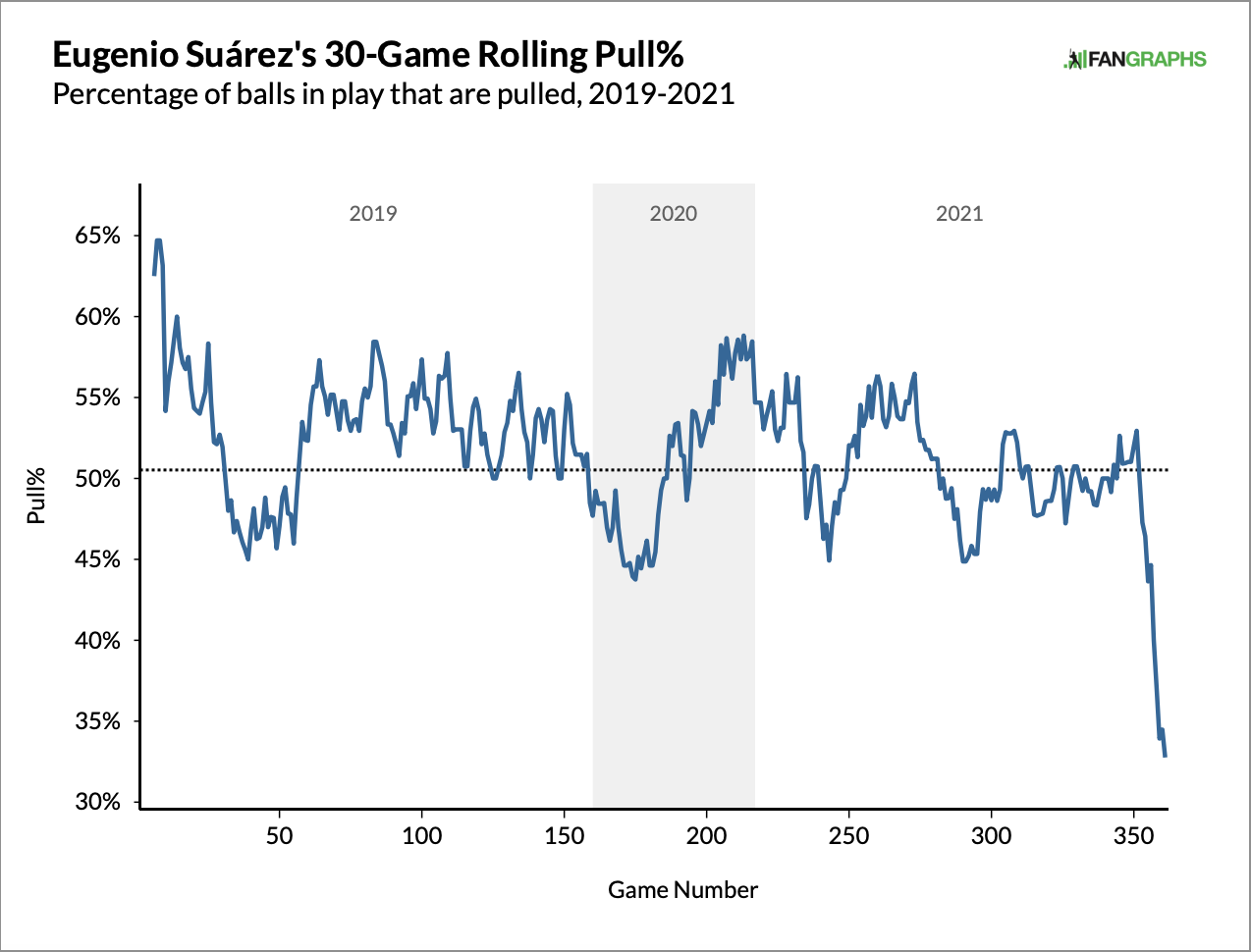
At no point in the past three years was Suárez pulling the ball less than he did at the end of 2021—and dramatically so. In September (plus three games in October), Suárez pulled less than 30 percent of his batted balls. Dating back to the start of 2019, the lowest pull rate Suárez had posted in a single month (in which he recorded at least 50 PA) before September was 45.2%. The utter lack of precedent for how little Suárez pulled the ball suggests that this turn of events might be more than just noise.
In short, the hitter Suárez was in the midst of his Ruthian moment looked a lot like the hitter he was in three full seasons before 2019. He chased less, made more contact, hit more line drives, sprayed the ball around more, and kept the strikeouts at a reasonable level. (All of the following numbers are courtesy of FanGraphs.)
Subtle Tweaks, Big Payoff?
Looking at Suárez’s swing offers some supporting evidence for this hypothesis. I’m not a hitting coach, but I see some differences in stance and intention. One distinct difference between the beginning and end of Suárez’s season is where he held his hands:
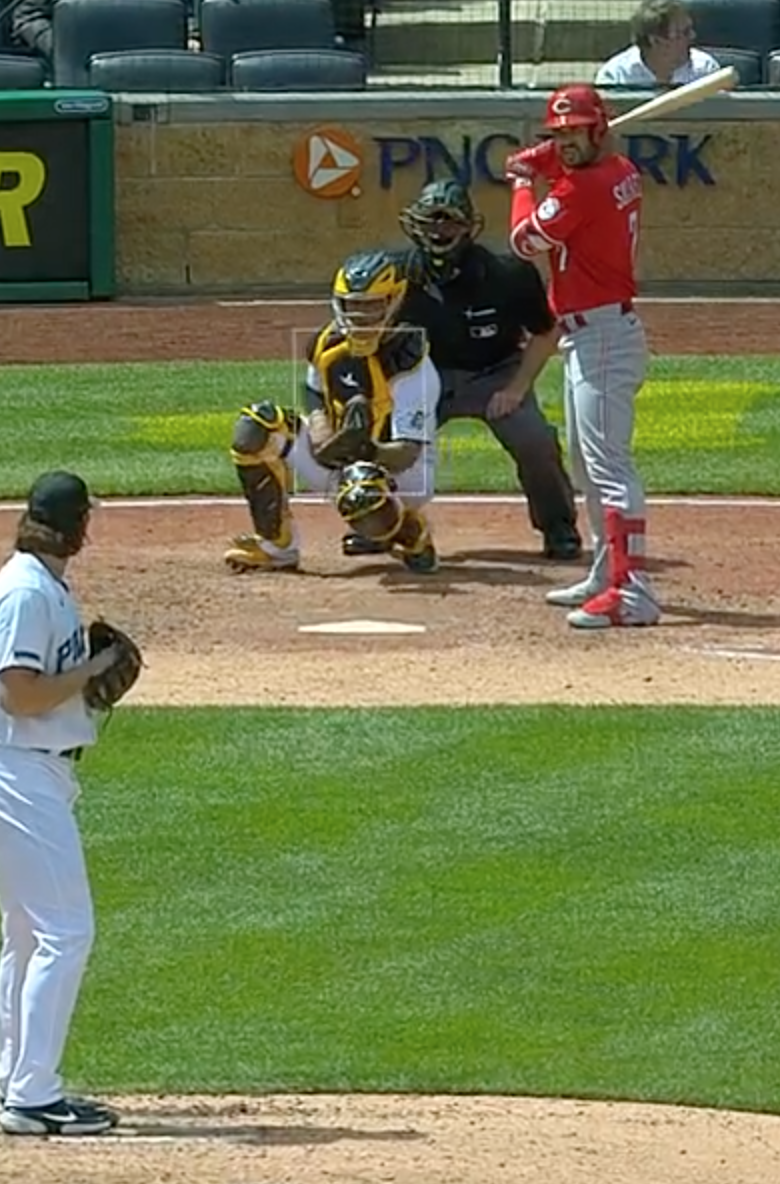
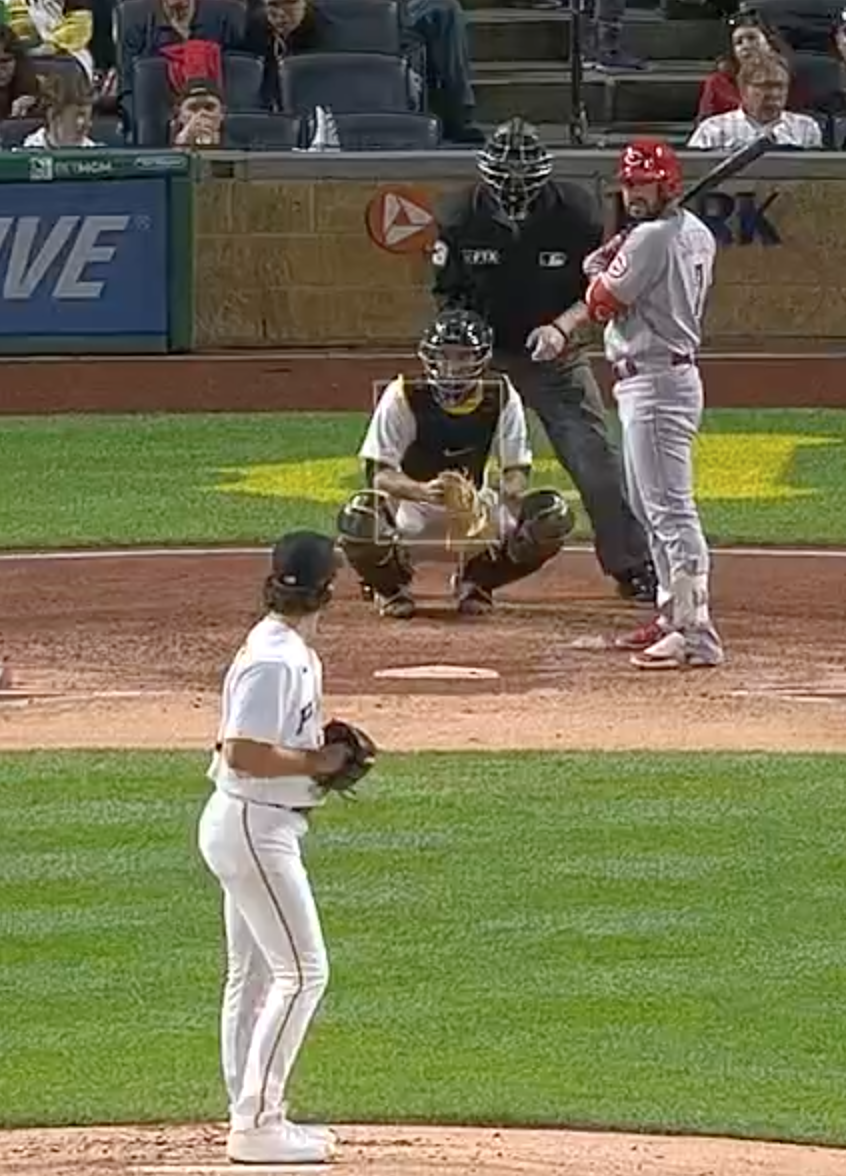
The first image is from an at-bat in May against Clay Holmes, and the second is from an at-bat in October against Max Kranick. (Thank you, Pirates broadcast, for dead-on camera angles!) He’s resting the bat on his shoulder, his hands are lower, and he looks a bit more relaxed.
I then stopped each video when Suárez planted his lead foot:
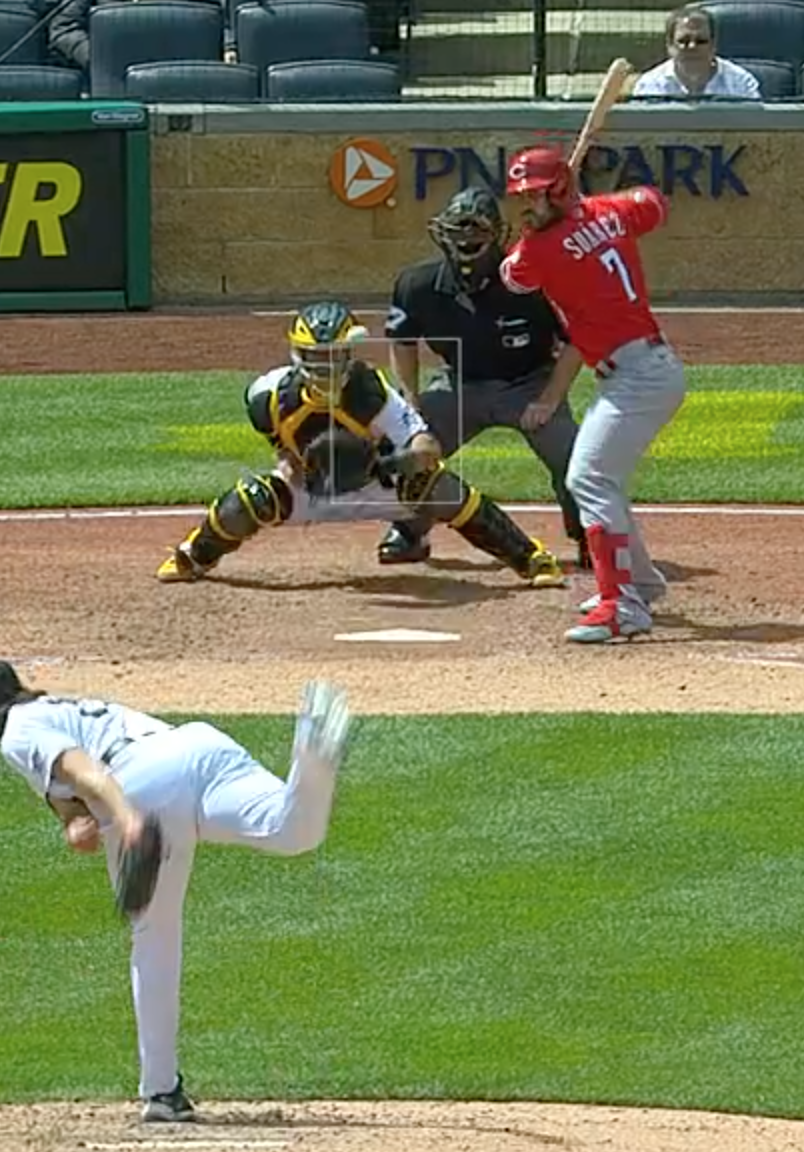
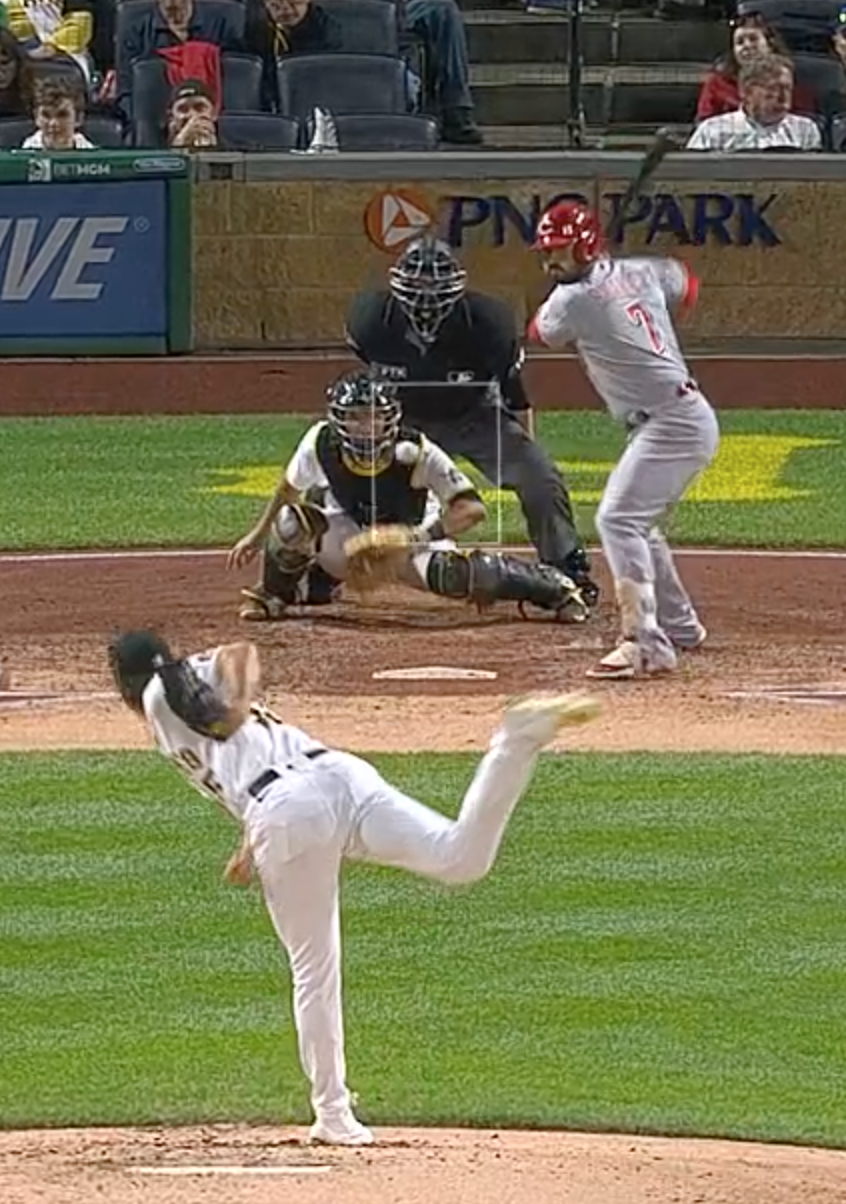
Both of these pitches were on the outside part of the plate. Suárez pulled the first one to left field for a base hit and put the second one over the centerfield wall for a home run. In the first at-bat, his front foot landed about even with his back foot. In the second, he landed more closed. This could be a product of my editing, but he looks more intent on pulling the first pitch and more set on going with the second pitch. These details may well point to a hitter who’s not pressing to pull the ball.
What to Look For in 2022
I will be watching Suárez with great interest and cautious optimism as he heads to the Pacific Northwest. To be clear, there are certain aspects of his September that he won’t reproduce. A pull rate below 30 percent won’t stick for a full season, nor will a .432 BABIP. It’s also important to note that Suárez was hitting fly balls at a rate of over 50 percent during his hot stretch. That number will have to come down for him to enjoy sustainable success, especially in his new, more spacious abode at T-Mobile Park.
All of that said, there are concrete reasons to think Suárez can bring his batting average into the mid-.200s to complement his trademark pop. Batted ball metrics and the eye test suggest that the old Suárez is still in there and that we saw a glimpse of him in September. He has the keys to third base in Seattle, and the chance to DH will give him more opportunities to get into the lineup. If he comes out of the gate hot without being too pull-happy and his plate discipline in check, he could be in for quite a debut season as a Mariner.
(Photo by Icon Sportswire) Adapted by Shawn Palmer (@PalmerDesigns_ on Twitter)


wow I think you found something!
How much do you think Suarez’ early 2020 shoulder surgery could have contributed to his change in plate approach? Perhaps compensating for pain or range of motion necessitated those changes?
Great question! The change in approach definitely seemed to happen in 2019 pre-injury, but it would make sense that a limited range of motion in his shoulder would hamper his ability to go the other way or drive the ball the way he did in 2019. It might also be the reason he took so long to readjust!